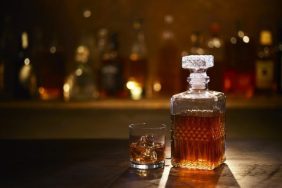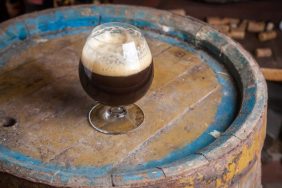I know I might be breaking new ground with this idea, but whiskey isn’t brown when it comes out of the still. I get that I probably should have given you a spoiler alert before that statement. But, now that you know, I can explain a little bit about how it gets that amber or brown hue we all know and love.
Whiskey becomes the whiskey we expect to see in our glass only after it’s been aged in barrels. It also gets much of its flavor from this process. But, do different types of barrels make a difference? And what if they are seasoned with (or used to mature) other spirits and other forms alcohol?
By now, you’re probably wondering what difference a barrel makes when it comes to the overall flavor of a spirit. The answer is a lot. This is especially true when your spirit is aged in say American oak casks and then matured in barrels that formerly held spirits and other wines.
“Distillers age their whiskies in former wine barrels as this method offers the opportunity for the wood material to soften and interact with the new make spirit, resulting in less harshness and roundness to the final product,” says Stuart MacPherson, Master of Wood for The Macallan.
Secondary maturation in barrels that formally aged wines, fortified wines, or even other spirits, provides a creative opportunity make something completely new.” It lets you play with flavors that wouldn’t otherwise be achievable in a traditional whiskey,” says Brian Treacy, President of Sagamore Spirit. “I would say it comes from the same place as a mixologist who takes a great base spirit and transforms it into something new in a cocktail.”
Sherry Casks
The Macallan is well-known for aging its whisky in sherry casks. By doing so, it creates whisky of the quality Macallan drinkers expect as well as whisky with natural colors (no food coloring here), and distinctive aromas and flavors. “A study commissioned exclusively by The Macallan demonstrated that the exceptional oak sherry casks account for up to 80% of the final aromas and flavors, resulting in The Macallan team’s heavy investment in sourcing, crafting, seasoning and caring for their casks,” says MacPherson. Sherry seasoned casks add a wide range of flavors to the product. “The Spanish oak sherry casks impart classic aromas and flavors of dried fruits, spices and chocolate orange, while the American oak sherry casks impart softer aromas and flavors of vanilla and fresh fruits,” says MacPherson.
Port Wine Barrels
Some distillers are experimenting with maturing whiskey in port wine barrels. “The fruitiness of red wine and port seemed like they would bring an interesting new flavor profile to our rye whiskey–and we were right,” says Treacy. “We wanted to pull out the jammy fruit notes of the wine, but not have it be too one dimensional or overly sweet.” Maturing whiskey in port wine barrels gives the whiskey a well-rounded flavor with the richness of darker fruits that work well with the rye spiciness.
Muscatel Wine Barrels
Sagamore and other distillers are also experimenting with maturing its rye whiskey in barrels that previously held muscatel wine. “Muscatel imparts a wonderful blend of rich dark fruits and sweetness that blend nicely with rye spice,” says Treacy. “You will find fig, plum, raisin notes with a hint of honey.”
Ex-Bourbon Barrels
The maturation of whisky in casks that formerly held bourbon is extremely common in the world of Scotch. There’s a few reasons why this is so common. “American oak is good quality and the supply is reliable,” says Lukasz Dynowiak Speyburn Global Brand Ambassador. “Most American bourbon must be matured in new oak and Scotch whisky was never matured in new oak so it’s a win-win.” The flavors that Scotch whisky derives from the American casks has more to do with the wood itself than the previous fill. “American oak typically lends vanilla, coconut, spicy and sweet characteristics, to both American and Scottish whiskies,” says Dynowiak.









